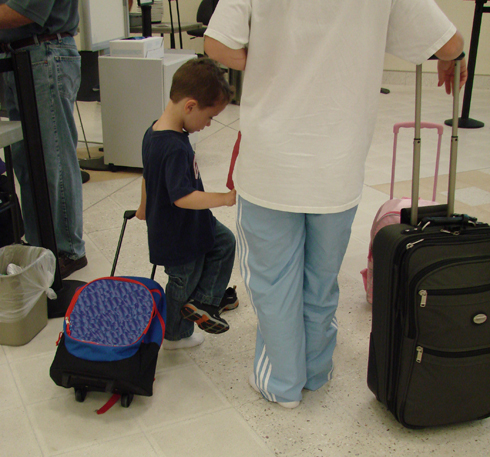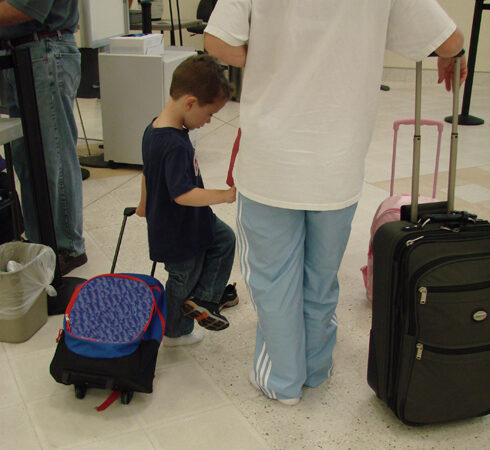One of the biggest problems of today’s air travel is the amount of time spent by travelers in airport security checks. According to the International Air Transport Association (IATA) the solutions for this issue would be a ultra-sensitive screening system that would filter passengers based on risk level and scan the as they walk through this high-tech equipment.

Such and advanced “sniffing” system would not only reduce the time of current security checks, it would also allow to merge customs and immigration in a one-stop screening station, freeing more time for passengers to shop more before their flight or afford to arrive later at the airport and thus reduce travel time. A first mock-up of what is sees as a future three-channel air travelers screening system has just been introduced by the IATA at the annual meeting of airline heads in Singapore.
“It’s the future we envision about 5 to 7 years from now,” Ken Dunlap, IATA’s global director for security and travel facilitation, told Reuters. “We’re looking at a way of increasing security where we don’t treat every passenger that has a pair toe-nail clippers as a potential terrorist. We’re looking for a paradigm that is based on looking for bad people, not only bad things.”
The pre-flight screening system would separate people according ot risk in three separate categories – “enhanced,” the sugar-coated version of highest risk, “normal” and a third category with the lowest risk, “known traveler.”
In the past few years, air travelers have been dealing with multiple layers of security checks, which have resulted in more time required to get on their flights, longer queues, reluctance to invasive checks and irritation. IATA’s vision entails a technically advanced solution that would sniff passengers on-the-go, combining X-ray scans, shoe scanning, full body screening, liquid detection and explosive trace scans.
According to IATA, such a futuristic solution is a must in the coming years, as air travel is booming, expected to hit 16 billion passengers by 2050. The current procedures and equipment will soon be rendered useless or we will have to get to the airport days before our actual flight.
Some of the technology required for this on-stop sniffing and screening airport system already exists, while some components still need to be refined. Whenever it is ready, it is a fact it will make navigating airports before a flight painless and a lot less time consuming.


 By
By 







